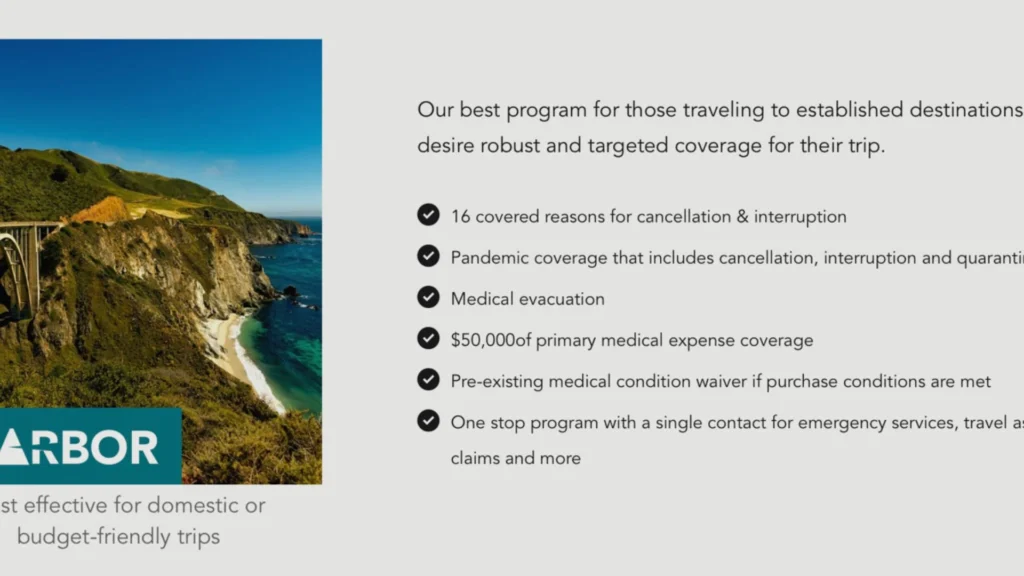In the dynamic and ever-evolving world of insurance, one niche offering has been gaining significant traction in recent years – redpoint insurance. As the name suggests, this specialized coverage protects against unexpected incidents or emergencies during outdoor recreational activities, adventure sports, or other high-risk endeavors.
Redpoint insurance has emerged as a crucial safeguard for individuals who prioritize an active lifestyle and seek to mitigate the financial risks associated with their chosen pursuits. From mountain climbers and skiers to kayakers and mountain bikers, this type of insurance has become an integral part of the risk management strategies for adventure enthusiasts across the globe.
Understanding the Scope of Redpoint Insurance
Redpoint insurance is designed to provide comprehensive coverage for a wide range of outdoor activities and adventure sports. Unlike traditional health or travel insurance policies, which may have exclusions or limitations for certain high-risk activities, redpoint insurance specifically caters to the unique needs of individuals engaged in these types of pursuits.
The scope of redpoint insurance typically encompasses the following:
- Medical Expenses: In the event of an injury or medical emergency during an outdoor activity, redpoint insurance can cover the cost of emergency medical treatment, including transportation to the nearest appropriate medical facility and any necessary repatriation or evacuation.
- Search and Rescue Operations: Redpoint insurance often includes coverage for the cost of search and rescue missions, should an individual become lost, injured, or stranded during their outdoor adventure.
- Trip Cancellation and Interruption: Some redpoint insurance policies may provide coverage for trip cancellation or interruption due to unforeseen circumstances, such as severe weather conditions or unexpected medical emergencies.
- Equipment Damage or Loss: Redpoint insurance may also offer protection against the loss or damage of specialized outdoor equipment, such as climbing gear, kayaks, or mountain bikes, which can be costly to replace.
- Liability Coverage: In some cases, redpoint insurance may include liability coverage, which can protect if an individual’s actions during an outdoor activity result in injury or damage to a third party.
Key Features and Benefits of Redpoint Insurance
Redpoint insurance offers a range of features and benefits that make it a valuable investment for adventure enthusiasts. Some of the key advantages of this type of coverage include:
Comprehensive Coverage
Redpoint insurance policies are designed to provide a comprehensive suite of protections tailored to the specific needs of individuals engaged in outdoor activities and adventure sports. This can include coverage for medical expenses, search and rescue operations, equipment damage, and more, all under a single policy.
Specialized Expertise
Many redpoint insurance providers employ teams of specialists with extensive knowledge and experience in the outdoor recreation and adventure sports industries. This expertise allows them to better understand the unique risks and challenges faced by their policyholders, and to develop customized coverage solutions to address those needs.
Flexible Coverage Options
Redpoint insurance policies often offer a range of coverage options and deductibles, allowing policyholders to tailor their coverage to their specific needs and budget. This level of flexibility can be particularly beneficial for individuals who engage in a variety of outdoor activities or who have varying levels of risk exposure.
Worldwide Coverage
Redpoint insurance policies typically provide coverage for activities and emergencies that occur both within the policyholder’s home country and abroad. This can be especially valuable for adventure enthusiasts who travel extensively to pursue their outdoor passions.
Rapid Response and Assistance
In the event of an emergency or incident during an outdoor activity, redpoint insurance providers often offer 24/7 assistance and support, including immediate access to emergency medical services, search and rescue coordination, and other critical resources.
Factors to Consider When Choosing Redpoint Insurance
When selecting a redpoint insurance policy, there are several key factors that individuals should consider to ensure they are getting the coverage that best suits their needs:
Activity Coverage
It’s essential to carefully review the list of covered activities and sports included in the Redpoint insurance policy. Some policies may have exclusions or limitations for certain high-risk activities, so it’s important to ensure that the coverage aligns with the specific outdoor pursuits you engage in.
Geographic Coverage
Understand the geographic scope of the redpoint insurance policy, as some providers may only offer coverage within specific regions or countries. If you travel extensively for your outdoor activities, it’s crucial to select a policy that provides worldwide coverage.
Coverage Limits and Deductibles
Carefully review the coverage limits and deductibles associated with the redpoint insurance policy. This will help you determine the level of financial protection you’ll have in the event of an emergency or incident, and ensure that the policy aligns with your risk tolerance and budget.
Emergency Assistance and Evacuation
Assess the emergency assistance and evacuation services offered by the Redpoint insurance provider. This can include factors such as the availability of 24/7 support, the speed of response, and the quality of the medical and transportation resources available.
Reputation and Customer Service
Research the reputation and customer service track record of the Redpoint insurance provider. This can include reviews from existing policyholders, as well as the provider’s overall industry standing and responsiveness to customer inquiries and claims.
The Cost of Redpoint Insurance
The cost of redpoint insurance can vary significantly based on a range of factors, including the specific activities covered, the geographic scope of the policy, the coverage limits and deductibles, and the individual’s risk profile.
In general, redpoint insurance premiums can range from a few hundred dollars to several thousand dollars per year, depending on the level of coverage and the specific needs of the policyholder. Factors that can influence the cost of redpoint insurance include:
- Activity Risk Level: The inherent risk associated with the outdoor activities and adventure sports being covered can significantly impact the premium. Activities with a higher risk profile, such as mountaineering or backcountry skiing, may have higher premiums.
- Geographic Coverage: Policies that provide worldwide coverage or include remote or high-risk regions may have higher premiums compared to those with more limited geographic scopes.
- Coverage Limits: Higher coverage limits, particularly for medical expenses and search and rescue operations, can result in higher premiums.
- Deductibles: Policies with lower deductibles generally have higher premiums, as the insurance provider is taking on a greater share of the financial risk.
- Age and Health Status: An individual’s age and overall health status can also be a factor in determining the cost of redpoint insurance, as these can impact the perceived risk.
It’s important to note that the cost of redpoint insurance should be weighed against the potential financial burden and risks associated with engaging in outdoor activities and adventure sports without adequate coverage. For many adventure enthusiasts, the peace of mind and financial protection provided by Redpoint Insurance can be well worth the investment.
Comparing Redpoint Insurance Providers
When it comes to selecting a Redpoint insurance provider, it’s important to carefully compare the offerings of different companies to ensure you are getting the best coverage at a reasonable cost. Some of the leading redpoint insurance providers in the market include:
- Global Rescue: Global Rescue is a prominent provider of redpoint insurance and emergency assistance services, offering a range of coverage options for a variety of outdoor activities and adventure sports.
- Ripcord Rescue Travel Insurance: Ripcord Rescue Travel Insurance specializes in providing comprehensive coverage for adventure travelers, with a focus on medical evacuation, search and rescue, and trip interruption protection.
- Redpoint Resolutions: Redpoint Resolutions is a specialized redpoint insurance provider that offers a suite of coverage options, including medical expense reimbursement, search and rescue, and equipment protection.
- World Nomads: World Nomads is a well-known travel insurance provider that also offers redpoint insurance coverage for a variety of outdoor activities and adventure sports.
- AIG Travel Guard: AIG Travel Guard is a global insurance provider that includes redpoint insurance coverage as part of its comprehensive travel insurance packages.
When comparing Redpoint insurance providers, it’s important to consider factors such as the breadth of coverage, the quality of emergency assistance services, the reputation and customer service track record of the provider, and the overall cost of the policy. By thoroughly researching and comparing different providers, adventure enthusiasts can find the Redpoint insurance solution that best meets their specific needs and budget.
Conclusion
Redpoint insurance has become an increasingly essential safeguard for individuals who are passionate about outdoor recreation and adventure sports. By providing comprehensive coverage for medical expenses, search and rescue operations, equipment damage, and other risks associated with these activities, redpoint insurance can help adventure enthusiasts mitigate the financial burden of unexpected incidents or emergencies.
As the popularity of outdoor pursuits continues to grow, the demand for specialized insurance solutions like redpoint insurance is likely to increase. By understanding the key features and benefits of this type of coverage, as well as the factors to consider when selecting a provider, adventure enthusiasts can make informed decisions to protect themselves and their chosen activities.
Ultimately, redpoint insurance can offer peace of mind and financial security for those who embrace the thrill and challenges of the great outdoors, allowing them to fully immerse themselves in their passions without the worry of overwhelming financial consequences.

FAQs
What is redpoint insurance?
Redpoint insurance is a specialized form of coverage that protects individuals engaged in outdoor recreational activities, adventure sports, and other high-risk endeavors. It typically includes coverage for medical expenses, search and rescue operations, equipment damage, and other risks associated with these activities.
What activities are typically covered by Redpoint insurance?
Redpoint insurance policies can cover a wide range of outdoor activities and adventure sports, such as mountaineering, rock climbing, skiing, snowboarding, kayaking, surfing, and more. The specific activities covered can vary across different insurance providers, so it’s important to review the policy details carefully.
How much does Redpoint insurance cost?
The cost of redpoint insurance can range from a few hundred dollars to several thousand dollars per year, depending on factors such as the specific activities covered, the geographic scope of the policy, the coverage limits and deductibles, and the individual’s risk profile.
What are the key benefits of having redpoint insurance?
Some of the key benefits of Redpoint insurance include comprehensive coverage for medical expenses, search and rescue operations, equipment damage, and liability; specialized expertise and support from the insurance provider; flexible coverage options; worldwide coverage; and rapid response and assistance in the event of an emergency.
How do I choose the right redpoint insurance provider?
When selecting a Redpoint insurance provider, it’s important to consider factors such as the breadth of activity coverage, the geographic scope of the policy, the coverage limits and deductibles, the quality of emergency assistance and evacuation services, and the reputation and customer service track record of the provider.
What should I do if I need to file a claim with my Redpoint insurance provider?
Suppose you need to file a claim with your Redpoint insurance provider. In that case, it’s essential to follow the provider’s specific claims procedures, which may include providing detailed documentation of the incident, obtaining necessary medical or rescue reports, and submitting the claim within the required timeframe. Many Redpoint insurance providers also offer 24/7 assistance and support to guide policyholders through the claims process.
